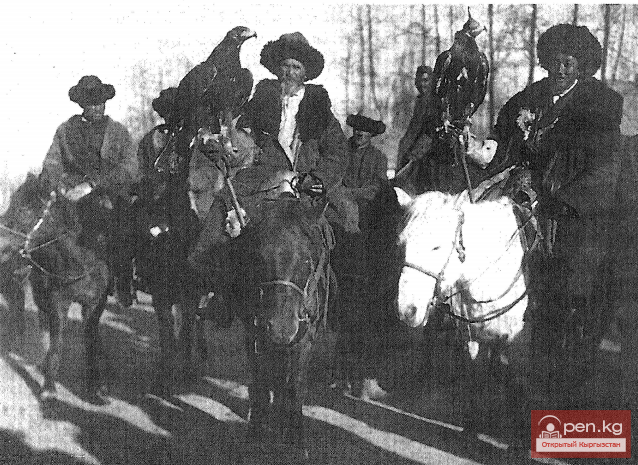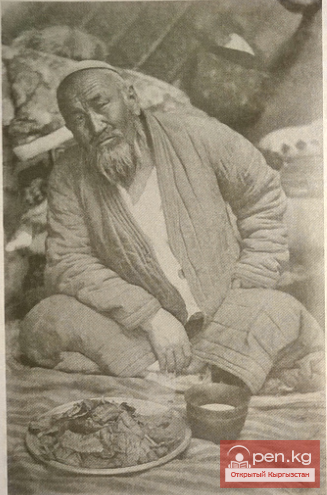HUNTING
Hunting has been an important component of the complex economy of the Kyrgyz from ancient times until the early 20th century, complementing livestock breeding and agriculture (Abramzon, 1971; Aitbaev, 1959, p. 82; Petrov, 1961, pp. 81, 82; Zhapparov, Toktakunova, 2006, p. 43). The meat of wild animals was consumed as food, and valuable fur was used as a means of payment, exchanged for food products and other goods produced mainly by sedentary agricultural peoples, as well as for hunting equipment.
Various information about hunting and its evolution can be gleaned from archaeological sources, rock paintings, notes from travelers and researchers, scientific publications, as well as from ethnographic and folklore materials stored in the Manuscript Fund of the Ch. Aitmatov Institute of Language and Literature of the National Academy of Sciences of the Kyrgyz Republic. The sources suggest that hunting among the Kyrgyz has deep historical roots. In the ancient ravines of Central Asia, hundreds and thousands of remains of various animals hunted by hunters are still found; numerous spear and dart tips are also discovered there (Kushkumbaev, 2010, p. 181). The antiquity of hunting among the Kyrgyz and its significance in economic activities is evidenced by the names of the years and months in the calendar cycle. Thus, in the folk calendar, certain months of the year are assigned names of animals, for example: teke (male mountain goat) - June, kulja (male mountain ram) - May, bughu (deer) - April, etc. (Aitbaev, 1959, p. 81). Data from the oral folk creativity of the Kyrgyz, particularly in the epic "Kozhozhash," indicate that hunting held an important place in the lives of the Kyrgyz even in ancient times.
During the early Middle Ages, collective forms of hunting predominated, which was due, among other things, to the insufficiently advanced types of weapons. Drive and beat hunting methods were significant not only for hunting game: they also practiced tactical and technical techniques of combat that could be useful in wars against enemies. A notorious hunter among the major rulers and famous commanders was the renowned "strong Kyrgyz khan" Bars-Beg, who combined successful battles on the battlefield with his favorite pastime of hunting in Cherni Sunga, located in the foothills of the Western Sayan (Klyashtorny, 1976, p. 261).
In the 18th-19th centuries, hunting remained a secondary, auxiliary direction of economic activity.
It was especially characteristic of weak small farms, poor families, and communities that provided themselves with meat, including through hunting (Aitaliev, 2011, p. 41). The importance of this activity particularly increased during periods of livestock mortality due to drought. Representatives of the upper classes regarded it more as entertainment - they usually participated in collective hunts, with ordinary hunters providing them with game. The exceptional "interest in hunting with trained birds often served as a circumstance that seemed to push class and property differences to the background" (Simakov, 1989, p. 32). The most experienced and successful hunters were well-known in society. The particularly skilled among them were called kezge atar merghen.
Agriculture














































